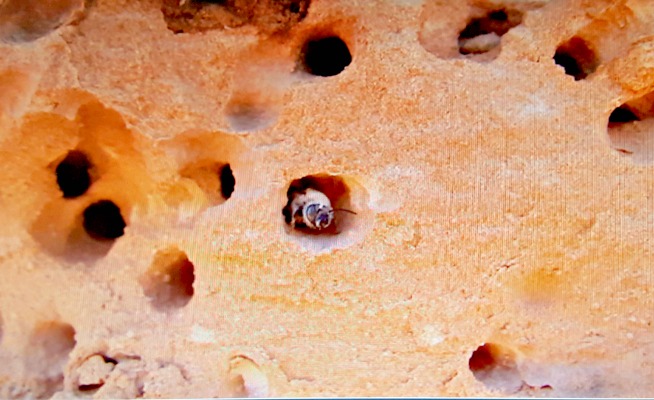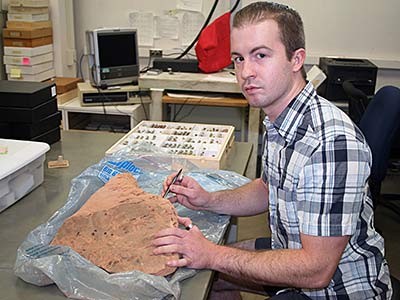LOGAN, Utah, Sept. 16, 2016 (Gephardt Daily) — Utah State University entomologists have discovered a desert-dwelling specie of bees that puts Utah’s hardworking honeybees to shame.
At least architecturally speaking.
The tiny Anthorphora pueblo build’s its nests by excavating sandstone, a sedimentary rock made of small grains of minerals and sand, compressed together. It’s a relatively soft rock, but still infinitely harder to burrow into than, say, mud or wood.
USU doctoral biology student Michael Orr was lead author on a paper on the bees, published this week in Current Biology.
“Not much is known about this hard-to-find species, and our first step was to confirm it actually prefers nesting in sandstone,” said Orr, in a statement released Utah State University.
“Once we confirmed this preference, the next step was to explore why the bees expend such tremendous effort and energy, limiting their ability to reproduce, to create these shelters.”

Additional authors on the paper are Terry Griswold, research entomologist with the USDA-ARS Pollinating Insects Research Unit at Utah State, USU biology professor James Pitts and retired USDA-ARS research entomologist Frank Parker.
Parker discovered bees nesting in sandstone nearly 40 years ago at two sites in Utah’s San Rafael Desert, collected samples of the nests and reared the inhabitants to emergence.
But his work was stored away and largely untouched until Orr begin examining the samples a few years ago and discovered five new nesting sites ranging from Ancestral Puebloan sandstone cliff dwellings at Colorado’s Mesa Verde and natural formations in southern Utah and California’s Death Valley.
“These bees are considered uncommon,” Orr said. “As the bees use water to help excavate sandstone, we found many sites by targeting areas near water.”
Orr said there are benefits to putting so much labor into shelter.
“Sandstone is more durable than most other nesting options and any bees that do not emerge from these nests in a year are better protected,” Orr said. “Delayed emergence is a bet-hedging strategy for avoiding years with poor floral resources — especially useful in the drought-prone desert.”
Nesting high in sandstone walls also protects bees from flash floods, and limits exposure to some parasites, he said.
“Because sandstone contains less organic matter than typical soils, we expect more microbes that make their own food such as photosynthetic cyanobacteria,” Orr says. “These microbes would be less likely to invade bee nests.”
The bees have solved a problem that humans have struggled with, Orr said.
“The desert is a hard place to live,” he said. “Anthophora pueblo has pioneered a suitable niche between a rock and a hard place.”







